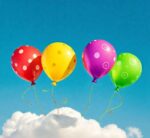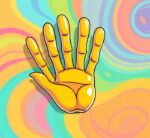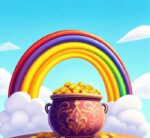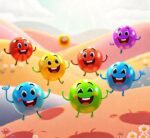- You are here:
- Home »
- words
- » Kindergarten Words That Start With P [LIST]
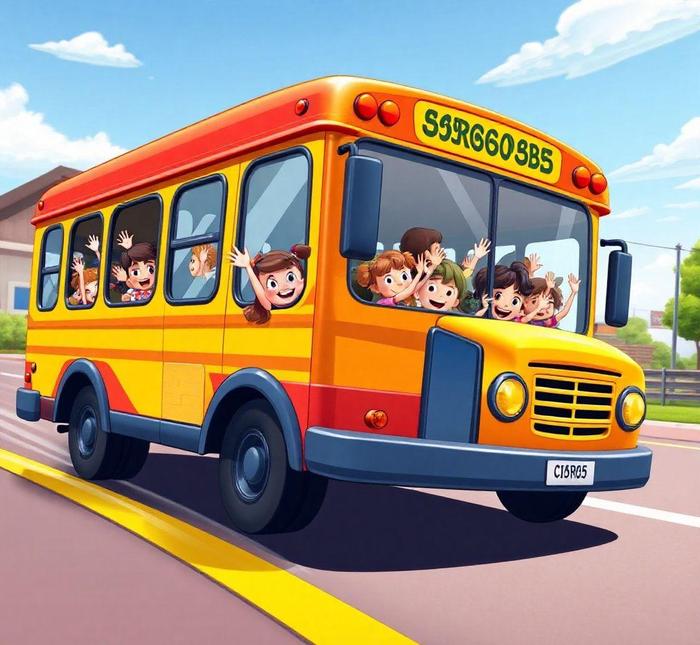
Kindergarten Words That Start With P [LIST]
When it comes to building vocabulary in young children, starting with simple, easy-to-understand words can make a big difference. The letter ‘P’ offers a wealth of engaging and fun words that are perfect for kindergartners. From animals like ‘penguin’ and ‘panda’ to everyday objects such as ‘pen’ and “plate”, these words are not only easy to pronounce but also commonly found in early learning environments. Teaching these words can help children with letter recognition, phonics skills, and basic sentence formation, all essential components of early language development.
In this article, we’ve compiled a list of kindergarten words that start with the letter ‘P’ to support teachers, parents, and caregivers in enriching their little one’s vocabulary. These words span various categories, including animals, food, nature, and common objects, offering a diverse range of options to keep kids engaged. Whether you’re crafting a lesson plan, reading stories, or simply playing word games, this list will provide a solid foundation for fostering language skills and a love of learning in young children.
Kindergarten Words That Start With P
1. Pencil
A pencil is a tool used for writing or drawing. It is usually made of wood with a piece of graphite inside, and it can be erased from paper.
Examples
- I use my pencil to write in my notebook.
- She sharpened her pencil before starting her homework.
2. Play
Play refers to engaging in activities for fun and enjoyment. It often involves physical movement, games, or creative imagination.
Examples
- Children love to play outside during recess.
- I like to play with my friends in the park.
3. Puppy
A puppy is a young dog. Puppies are playful, energetic, and often require training to learn good behavior.
Examples
- The puppy is so cute and fluffy.
- We adopted a puppy from the animal shelter.
4. Pink
Pink is a color that is made by mixing red and white. It is often associated with softness, sweetness, and femininity.
Examples
- She wore a pink dress to the party.
- I painted my nails pink for the celebration.
5. Pajamas
Pajamas are comfortable clothes worn while sleeping. They can be a set of a shirt and pants or a one-piece outfit.
Examples
- He wore his favorite pajamas to bed.
- I bought new pajamas with stars on them.
6. Pizza
Pizza is a popular dish made from dough topped with sauce, cheese, and various ingredients like vegetables or meats.
Examples
- We ordered pizza for dinner tonight.
- I love cheese pizza with lots of toppings.
7. Parrot
A parrot is a type of bird known for its bright colors and ability to mimic sounds or words. They often live in tropical areas.
Examples
- The parrot can mimic words and sounds.
- We saw a colorful parrot at the zoo.
8. Pillow
A pillow is a soft cushion used to support the head while sleeping. It is often filled with materials like feathers, foam, or cotton.
Examples
- I sleep with two pillows under my head.
- She fluffed her pillow before lying down.
9. Pool
A pool is a man-made structure filled with water for swimming, diving, or other water activities.
Examples
- We went to the swimming pool on a hot day.
- The pool is filled with water for swimming.
10. Picture
A picture is an image or artwork, usually created on paper or canvas, that represents something visually.
Examples
- I drew a picture of my family.
- She hung the picture on the wall.
11. Peach
A peach is a sweet, round fruit with a fuzzy skin. It has a pit inside and is typically eaten fresh or used in desserts.
Examples
- I ate a juicy peach for breakfast.
- Peaches grow on trees and are delicious in the summer.
12. Pineapple
A pineapple is a tropical fruit with a spiky outer shell and sweet, juicy flesh inside. It is often eaten fresh or used in smoothies.
Examples
- We had pineapple slices for dessert.
- Pineapples grow in tropical climates.
13. Penguin
A penguin is a type of bird that cannot fly but is an excellent swimmer. They are often found in cold climates, like Antarctica.
Examples
- The penguin waddled on the ice.
- I saw a penguin at the zoo today.
14. Pumpkin
A pumpkin is a large, round, orange fruit commonly associated with autumn. It is often used for decoration or in cooking.
Examples
- We carved a pumpkin for Halloween.
- She made a delicious pumpkin pie.
15. Pretend
Pretend means to act as if something is real, even though it is not. It is a form of imaginative play where children use their creativity.
Examples
- Let’s pretend we’re pirates looking for treasure.
- The children like to pretend they are superheroes.
16. Puzzle
A puzzle is a game or activity where pieces are put together to form a picture or solve a problem. It challenges the mind.
Examples
- She completed the puzzle with all the pieces.
- I like doing jigsaw puzzles with my family.
17. Parade
A parade is a public procession with people walking or riding in vehicles, often celebrating a special event or holiday.
Examples
- We watched the parade during the holiday celebration.
- The parade had many colorful floats and costumes.
18. Popcorn
Popcorn is a snack made by heating up kernels of corn until they explode into fluffy, edible pieces.
Examples
- We ate popcorn while watching the movie.
- I like my popcorn with butter and salt.
19. Patch
A patch is a small piece of material used to cover or fix a hole or tear in something, like clothing.
Examples
- She put a patch on her knee after she fell.
- I sewed a patch onto my jacket.
20. Planet
A planet is a large, round object that orbits a star, like the Sun. There are eight planets in our solar system.
Examples
- The Earth is a planet in our solar system.
- We learned about the planets in science class.
21. Princess
A princess is a female member of a royal family, often seen as a figure of beauty, grace, and kindness in stories.
Examples
- She dressed up as a princess for the costume party.
- The princess lived in a beautiful castle.
22. Polar Bear
A polar bear is a large bear that lives in cold regions, especially the Arctic. They are known for their white fur and strong swimming abilities.
Examples
- The polar bear lives in the Arctic.
- Polar bears have thick fur to keep warm in the cold.
23. Pickle
A pickle is a cucumber that has been preserved in brine or vinegar, often eaten as a crunchy, tangy snack.
Examples
- I love eating pickles with my sandwich.
- She added a pickle to her plate.
24. Pants
Pants are a piece of clothing worn on the lower body. They cover the legs and are usually made from fabric like cotton or denim.
Examples
- He wore blue pants to school today.
- My pants are too tight; I need a bigger size.
25. Pinecone
A pinecone is the seed-producing cone of a pine tree. It is often used in crafts or collected during outdoor walks.
Examples
- I found a pinecone in the forest.
- Pinecones fall from pine trees in the fall.
26. Plate
A plate is a flat, round dish used for eating or serving food. Plates come in different sizes and materials.
Examples
- Please put your food on the plate.
- She set the table with plates and glasses.
27. Pine
A pine is a type of evergreen tree that produces cones and has needle-like leaves. They are common in forests.
Examples
- We walked through the pine forest on the hike.
- Pine trees have long, thin needles instead of leaves.
28. Parachute
A parachute is a device used to slow down the fall of a person or object, typically made of fabric and opened during skydiving.
Examples
- The skydiver opened his parachute after jumping.
- A parachute helps slow down a person or object falling from the sky.
29. Paddle
A paddle is a tool used to move a boat or canoe through water. It has a long handle and a flat blade at one end.
Examples
- He used a paddle to row the boat across the lake.
- We played canoeing with paddles at the beach.
30. Poop
Poop is the informal term for solid waste that comes from the body after digestion. It is a natural part of the digestive process.
Examples
- The dog went outside to poop.
- I need to use the bathroom to poop.
31. Puppet
A puppet is a figure controlled by strings or by hand, used in performances to tell stories or entertain.
Examples
- The puppet show was fun to watch.
- She made a puppet from a sock and buttons.
32. Pick
To pick means to choose or select something. It can also refer to gathering fruits, flowers, or objects.
Examples
- I will pick an apple from the tree.
- She asked me to pick a book to read.
33. Post
A post is a piece of written or printed information, often displayed in a public place. It can also refer to mail that is delivered.
Examples
- I sent a letter in the mail post box.
- She put a post on the bulletin board.
34. Puddle
A puddle is a small pool of water that forms on the ground, usually after it rains.
Examples
- After the rain, there was a big puddle in the yard.
- She jumped in the puddle and got her shoes wet.
35. Parsnip
A parsnip is a root vegetable that looks like a white carrot. It is often used in cooking and has a sweet, nutty taste when cooked.
Examples
- We roasted parsnips for dinner.
- Parsnips are similar to carrots but are white and have a sweet flavor.
36. Pumpkin Pie
Pumpkin pie is a traditional dessert made from a spiced pumpkin filling in a pie crust, popular during the fall and holidays.
Examples
- We had pumpkin pie for dessert at Thanksgiving.
- Pumpkin pie is made from mashed pumpkin and spices.
37. Pothole
A pothole is a hole in the road caused by wear or damage. They can be dangerous for vehicles and pedestrians.
Examples
- There was a big pothole in the road.
- Be careful when driving, there’s a pothole up ahead.
38. Pat
To pat means to lightly touch or tap something, often in a caring or comforting way.
Examples
- She gave the dog a gentle pat on the head.
- Pat the dough gently with your hands.
39. Pocket
A pocket is a small bag or pouch sewn into clothing, used for carrying items like keys or money.
Examples
- She put her hands in her coat pocket.
- I found some coins in my pants pocket.
Historical Context

When we think of teaching young children their first words, certain letters and sounds tend to dominate the conversation. The letter "P" is one of the most prominent in early childhood education, with a range of simple, approachable words that are both useful and memorable. Words like "pig," "play," "pencil," and "pumpkin" are staples of kindergarten vocabularies across the world. But why does the letter "P" hold such a special place in early education?
Historically, the importance of early childhood education has evolved over centuries, and with it, the focus on developing foundational language skills. In the late 19th and early 20th centuries, educators began to recognize the critical role that phonics-based learning played in literacy development. The phonetic properties of the letter "P" — a bilabial plosive sound that is easy for young children to articulate — made it an ideal candidate for inclusion in the earliest stages of learning.
Moreover, during the late 1800s and into the early 20th century, the rise of early educational philosophies, such as those proposed by Froebel, Montessori, and Dewey, emphasized the importance of tactile, visual, and auditory stimuli in the learning process. Words starting with "P" are often tangible objects or familiar concepts (such as "pen," "park," and "puppy"), making them easy for children to associate with the world around them. The sensory appeal of such words helped children bridge the gap between sounds and real-world experiences, fostering both vocabulary acquisition and cognitive development.
In classrooms from the 20th century to the present, the letter "P" has been a reliable and engaging starting point for exploring phonetics, letter recognition, and the development of basic literacy skills. The historical emphasis on phonics-based instruction, alongside the inclusion of playful and concrete words beginning with "P," underscores why this particular letter remains a cornerstone of early education.
Word Origins And Etymology
The words that children encounter in their kindergarten years are often derived from a rich tapestry of linguistic history. Understanding the origins and etymology of these words provides an added layer of depth to their learning and helps highlight the fascinating connections between languages and cultures. Words beginning with "P" are no exception, many of them carrying with them centuries of linguistic evolution.
Take the word "pen," for instance. It traces its origins back to the Latin word penna, meaning "feather" or "wing," likely because early writing instruments were made from bird feathers. This origin reflects a period in history when tools were closely linked to the natural world. The word "pen" itself evolved over time, from the Latin penna to the Old French penne, before it became the modern English "pen."
Similarly, the word "pumpkin" also has an intriguing etymology. The word comes from the Greek pepon, meaning "large melon," which was adopted into Latin as peponem and later into French as pompon. The word went through multiple transformations before becoming "pumpkin" in English. The vegetable itself, native to North America, had long been an integral part of indigenous cultures before it made its way into European culinary practices and language.
Other kindergarten words starting with "P" like "pig," "plane," and "play" also have distinct roots. "Pig" comes from the Old English picga, while "plane," referring to an aircraft, comes from the word planus, meaning "flat" or "level," which reflects the aircraft’s design. Meanwhile, "play" is believed to have originated from the Old English plegian, meaning "to engage in sport or fun," and has been a fundamental part of childhood learning for centuries.
These examples show how even the simplest kindergarten words are steeped in fascinating linguistic histories that trace back through multiple languages and time periods. Teaching children not just the words but also the origins behind them can deepen their appreciation for language and its evolution.
Common Misconceptions
While "P" words are a staple in kindergarten classrooms, there are several common misconceptions about the role these words play in early literacy development. One of the most frequent misunderstandings is that introducing a word simply because it starts with a particular letter guarantees that a child will master it in their language acquisition journey.
For instance, many parents and educators assume that the word "penguin" is an ideal choice for early learning, when in fact, its relatively complex structure (the "gn" sound in particular) can make it a challenging word for young children to pronounce and spell correctly. Words like "penguin" may be memorable and fun, but they don’t necessarily align with the primary goal of building phonemic awareness at the kindergarten level.
Another misconception is that the order in which letters are introduced to young children is insignificant. In reality, some letters, like "P," "M," and "T," are often introduced earlier because of their simpler sounds. Other letters, such as "X" and "Z," are more complex and less common in everyday language, making them less essential at the start of a child’s literacy journey. Children often encounter confusion when letters with multiple pronunciations or silent letters, such as "P" in "psychology" or "pneumonia," are introduced prematurely. These words, while starting with "P," are too advanced and could disrupt the natural flow of phonics instruction.
A final misconception relates to the diversity of "P" words. While words like "pencil" and "puppy" are frequently used in kindergarten settings, it’s important not to neglect words from other semantic fields that start with "P." A balanced vocabulary development approach incorporates a range of words across different categories—animals, objects, actions, emotions—to ensure that young learners are not just memorizing isolated vocabulary but also understanding its context and usage.
Conclusion
In conclusion, words that start with "P" form a significant part of the early childhood vocabulary, not only because they are easy for young learners to pronounce and remember, but also because of their deep historical, linguistic, and developmental significance. From the phonetic appeal of the "P" sound to the rich etymology of words like "pen," "pumpkin," and "pig," the role of these words in early education is both practical and fascinating.
Moreover, as educators and parents continue to guide children through the process of language acquisition, it’s important to understand the misconceptions that can arise. Simply introducing words based on their starting letter, overlooking their pronunciation challenges, or failing to incorporate a diversity of vocabulary can limit the scope of a child’s learning. Instead, a thoughtful, balanced approach to introducing "P" words—one that considers their complexity, historical context, and real-world relevance—will help create a strong linguistic foundation for young learners.
Ultimately, the words children learn at the beginning of their educational journey are not just isolated terms but keys to unlocking a broader world of ideas, relationships, and communication. Through engaging with "P" words and exploring their origins, meanings, and uses, children gain a deeper understanding of language, paving the way for a lifetime of learning and discovery.



